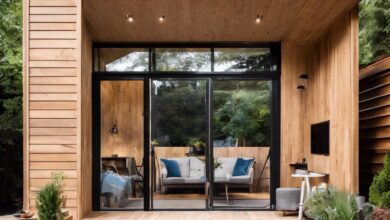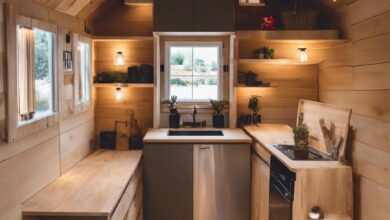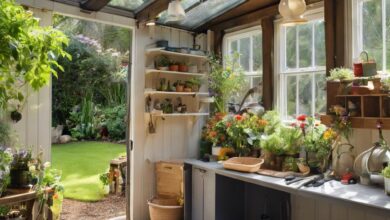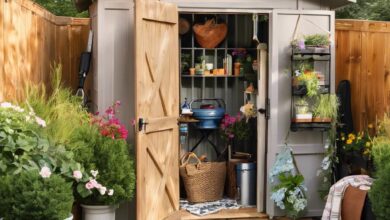Eco-Friendly Haven: A Contemporary Shed Built with Sustainable Materials
Nestled amongst the trees, a modern sanctuary awaits, built with a commitment to sustainability at its core. “Eco-Friendly Haven: A Contemporary Shed Built with Sustainable Materials” takes us on a journey through the innovative design and eco-conscious decisions that have shaped this unique retreat. From repurposed timber to energy-efficient fixtures, discover how this harmonious blend of design and sustainability is redefining the concept of a traditional shed.
Table of Contents
- Eco-Friendly Shed Design: A Sustainable Retreat
- Innovative Use of Recycled Materials in Construction
- Energy-Efficient Features for a Greener Shed
- Natural Lighting Solutions for a Brighter Space
- Water Conservation Strategies in Shed Building
- Green Roofing Options for Eco-Friendly Sheds
- Low-impact Foundation Choices for Sustainable Construction
- Maximizing Ventilation and Airflow for Comfort
- Non-toxic Finishes and Sealants for a Healthy Shed Environment
- Tips for Maintaining and Caring for Your Eco-Friendly Shed
- Q&A
Eco-Friendly Shed Design: A Sustainable Retreat
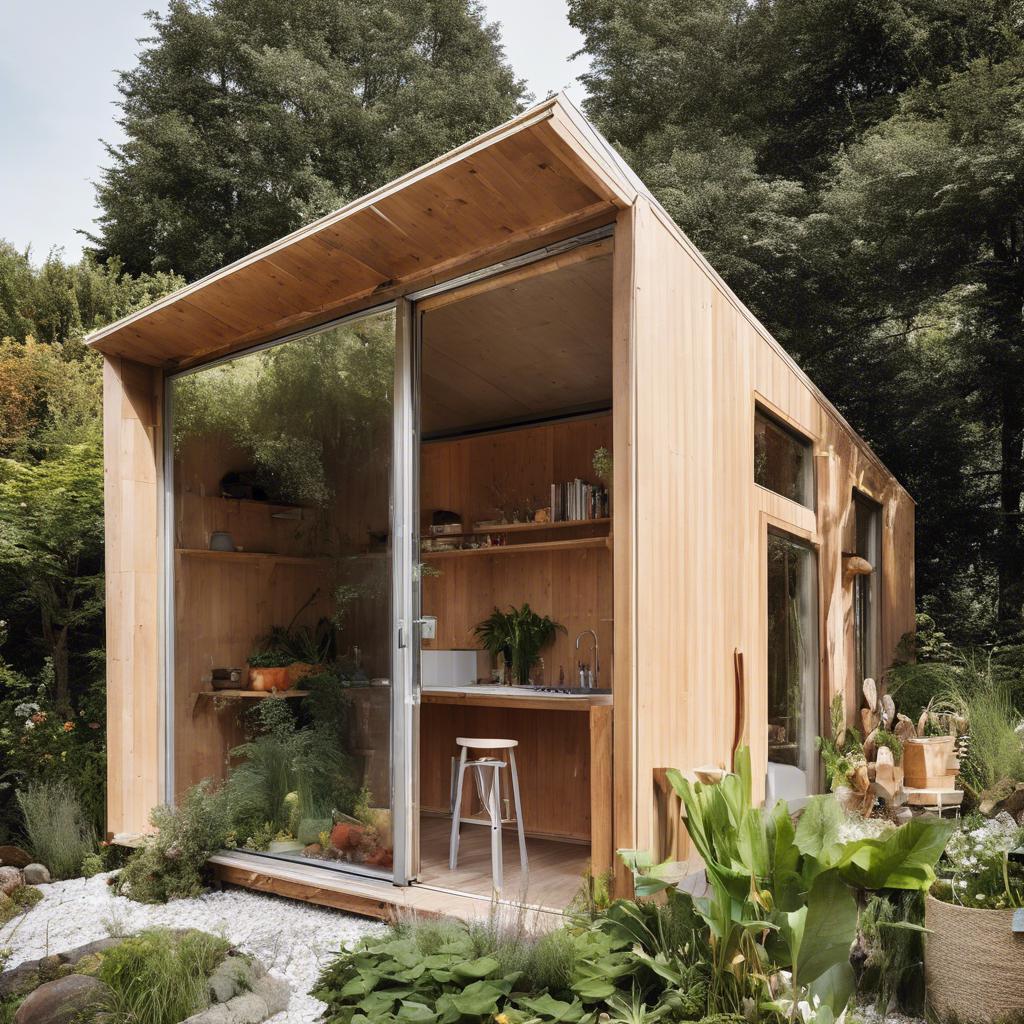
Imagine stepping into a serene retreat nestled in the heart of nature, where every detail has been carefully crafted to minimize impact on the environment. Welcome to the Eco-Friendly Haven, a contemporary shed designed with sustainability in mind. Built with a combination of recycled materials, green technologies, and eco-conscious principles, this modern structure offers a harmonious blend of style and earth-friendly living.
One of the key features of the Eco-Friendly Haven is its use of sustainable materials. From reclaimed wood siding to recycled metal roofing, every element of the shed has been thoughtfully chosen to reduce waste and carbon footprint. The interior boasts bamboo flooring, energy-efficient LED lighting, and low-VOC paint, creating a healthy and eco-conscious living space. With a focus on natural ventilation and passive solar design, the shed is able to maintain a comfortable temperature year-round without relying on traditional heating or cooling systems.
But the Eco-Friendly Haven is not just about sustainable materials – it’s also a showcase of innovative green technologies. Solar panels power the shed’s lighting and appliances, while a rainwater harvesting system collects water for irrigation and greywater usage. The shed’s design includes a living roof planted with native species, providing insulation and reducing stormwater runoff. With these features and more, the Eco-Friendly Haven demonstrates how sustainable design can be both beautiful and functional, offering a peaceful retreat that reflects a commitment to environmental stewardship.
Innovative Use of Recycled Materials in Construction
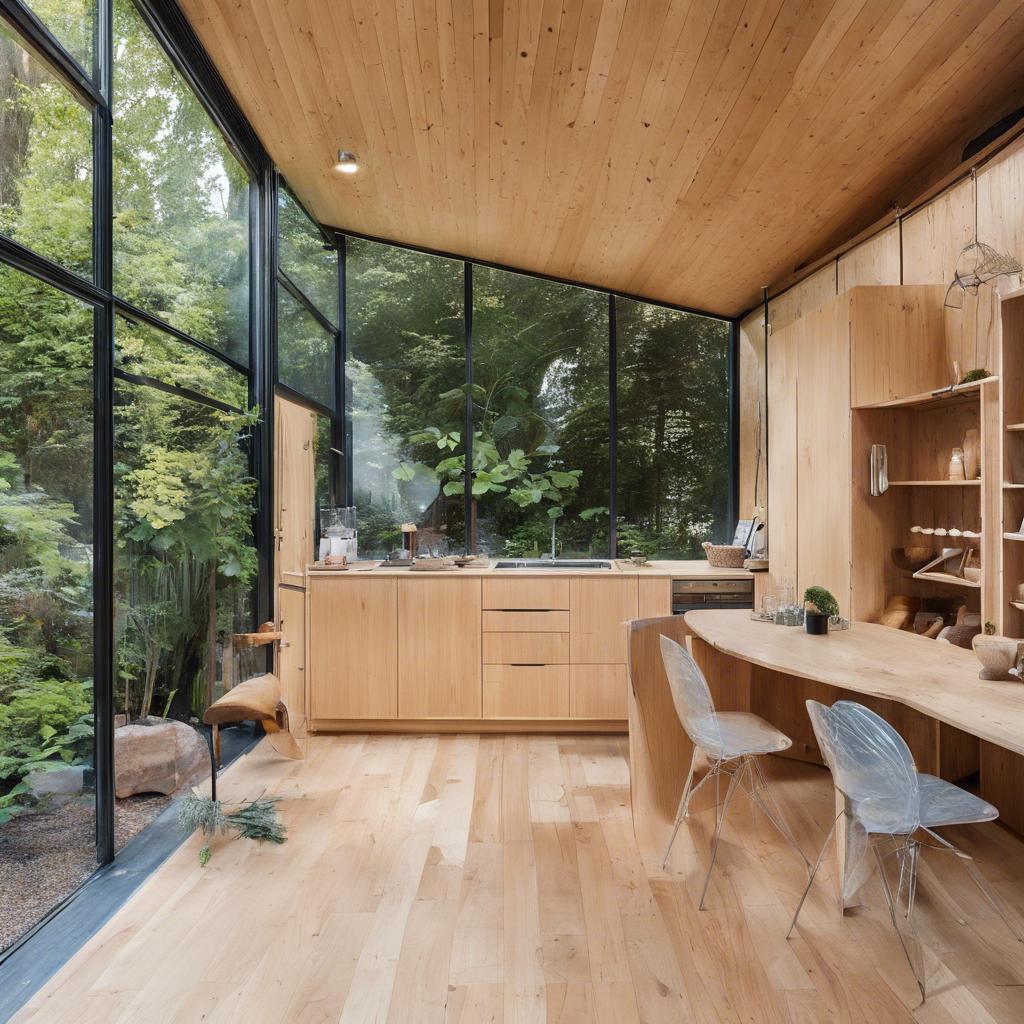
Imagine stepping into a modern retreat nestled in the heart of nature, where every corner whispers sustainability. This innovative shed is not just a structure; it’s a testament to the power of recycled materials in construction.
From reclaimed wood beams to repurposed shipping containers, every element of this eco-friendly haven has a story to tell. The exterior showcases a harmonious blend of textures and colors, showcasing the beauty of upcycled materials.
Inside, the space is transformed into a sanctuary of serenity, with natural light flooding in through strategically placed windows made from recycled glass. The furniture is crafted from salvaged materials, artfully repurposed to create a minimalist yet inviting atmosphere.
Energy-Efficient Features for a Greener Shed
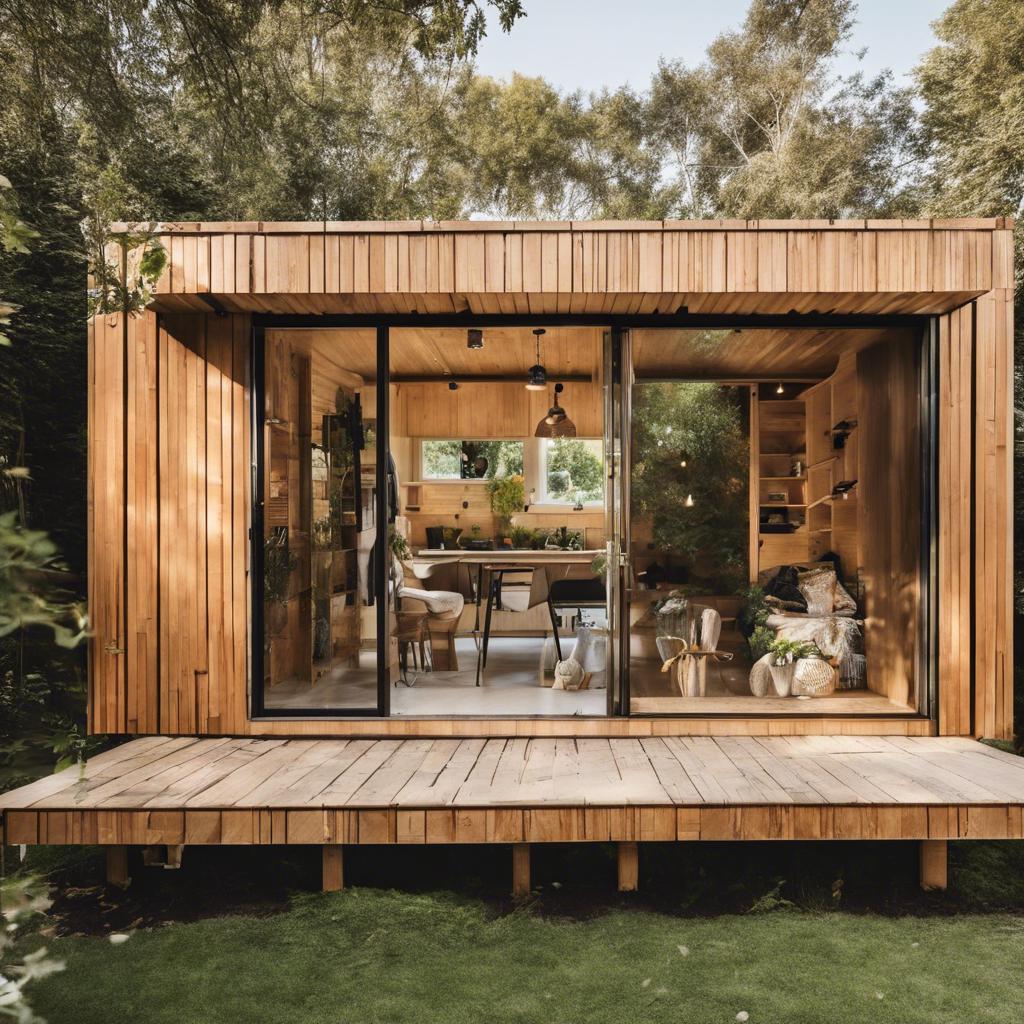
In our modern world, sustainability is becoming increasingly important in all aspects of life. This includes our living spaces, even the smallest ones. Imagine having a shed that not only provides extra storage or living space but is also environmentally friendly. Our eco-friendly haven is a contemporary shed built with sustainable materials that make it energy-efficient and perfect for those looking to reduce their carbon footprint.
One of the key features of this green shed is the use of solar panels on the roof, providing renewable energy to power lights, appliances, and devices inside. This not only reduces electricity costs but also helps to decrease your reliance on non-renewable energy sources. Additionally, the shed is insulated with recycled materials to regulate the temperature inside, reducing the need for heating or cooling energy.
Another eco-friendly feature of this sustainable shed is the rainwater harvesting system installed to collect and store rainwater for various uses such as watering plants or cleaning. This not only conserves water but also reduces the demand on municipal water sources, making it a truly self-sufficient and environmentally conscious structure.
Natural Lighting Solutions for a Brighter Space
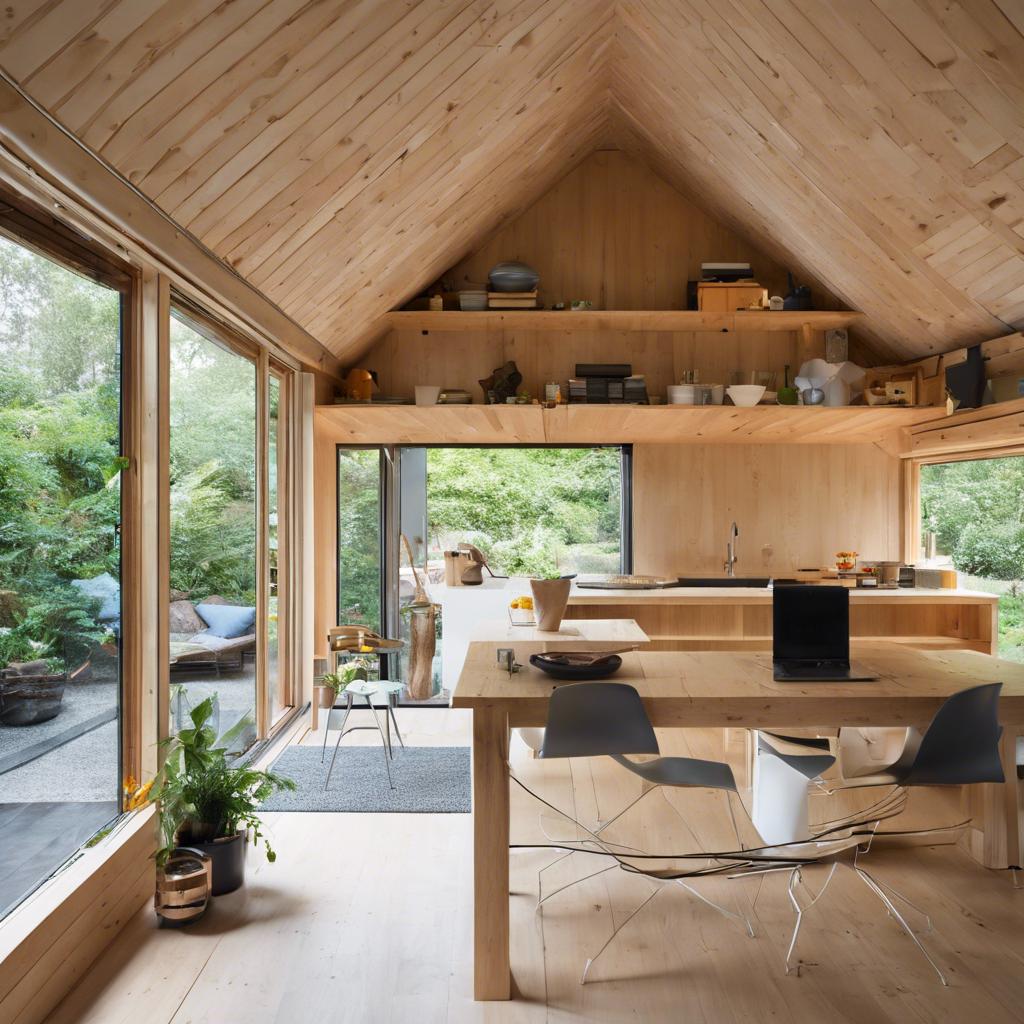
Looking to brighten up your space with natural lighting solutions? Look no further than incorporating sustainable materials into your design. One innovative example is the contemporary shed built with eco-friendly materials that not only brightens up the space but also reduces your carbon footprint.
Imagine a cozy haven that is not only aesthetically pleasing but also environmentally conscious. This shed utilizes large windows and skylights to maximize natural light, creating a bright and welcoming atmosphere. By harnessing the power of the sun, you can reduce your energy consumption and enjoy a space that is both eco-friendly and stylish.
In addition to the abundant natural light, the sustainable materials used in this shed contribute to its eco-friendly design. From reclaimed wood to recycled glass, every element of this contemporary structure is carefully selected to minimize its impact on the environment. By choosing sustainable materials, you can create a space that is not only beautiful but also environmentally responsible.
Water Conservation Strategies in Shed Building
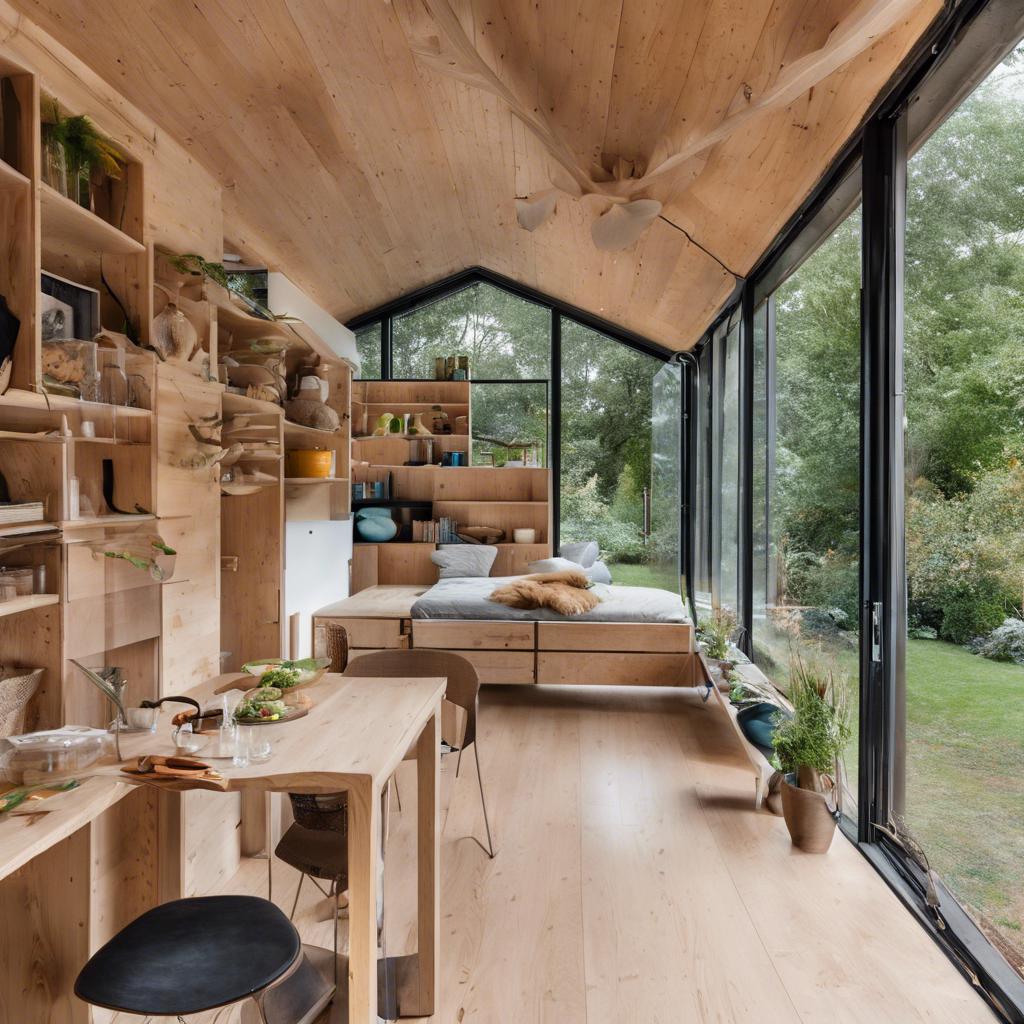
When it comes to building a shed, there are plenty of eco-friendly options available to help conserve water and reduce our environmental impact. One strategy is to use sustainable materials such as bamboo, reclaimed wood, or recycled plastic lumber for the construction of the shed. These materials not only help to conserve natural resources but also reduce the amount of water needed for production.
Another important consideration in water conservation is the design of the shed itself. By incorporating features such as rainwater harvesting systems, greywater recycling, and drought-resistant landscaping, you can significantly reduce your water usage. These strategies not only help to conserve water but also create a more sustainable and environmentally friendly shed.
Furthermore, it is essential to establish good water conservation habits to ensure the longevity of your shed and reduce your overall water consumption. Simple practices such as fixing leaks, using water-efficient fixtures, and practicing responsible water usage can make a big difference in conserving this precious resource. By implementing these strategies, you can create an eco-friendly haven that not only benefits the environment but also provides a sustainable and beautiful space for your needs.
Green Roofing Options for Eco-Friendly Sheds
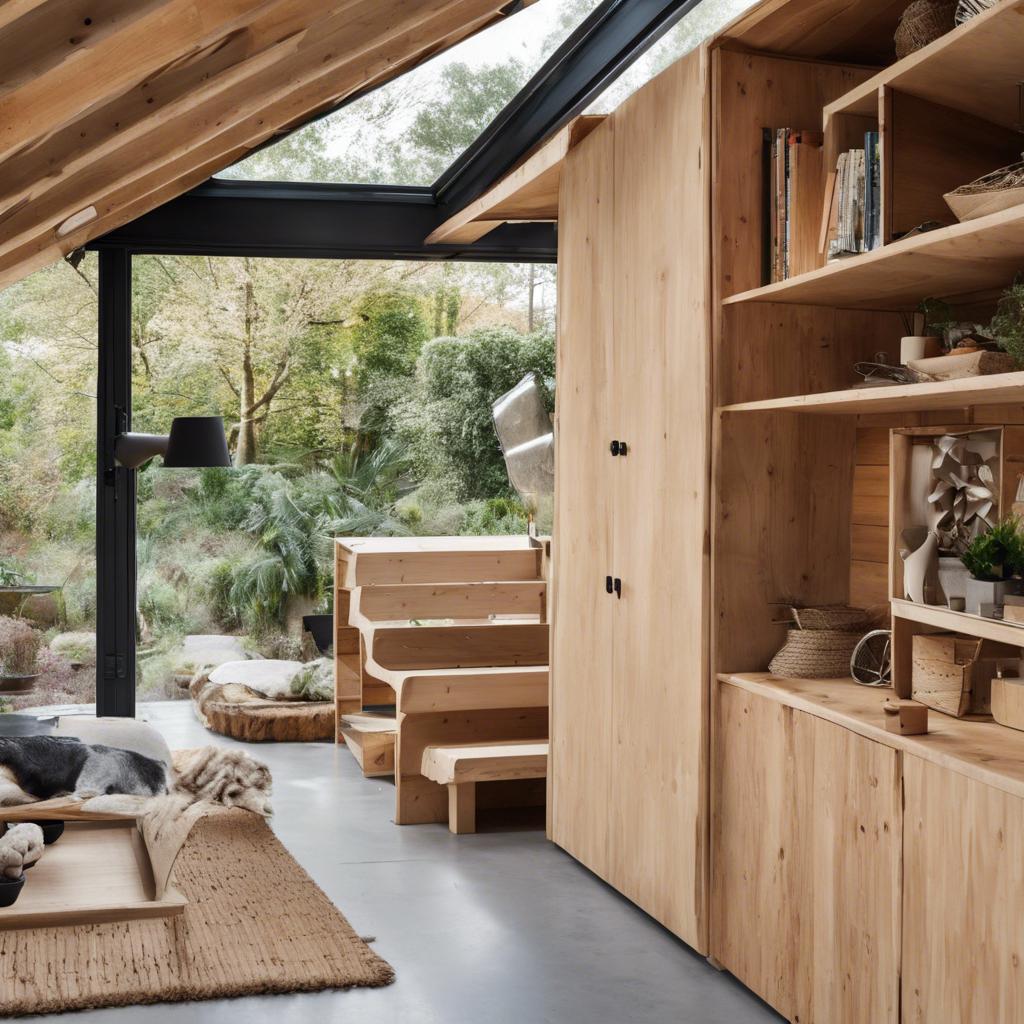
Looking to create a sustainable and eco-friendly outdoor space? Consider opting for green roofing options for your shed. Green roofs not only help reduce energy costs and stormwater runoff but also provide habitats for wildlife and contribute to a greener environment.
When it comes to eco-friendly sheds, there are a variety of green roofing options to choose from. From traditional to contemporary styles, there is a solution for every aesthetic preference. Some popular choices include:
-
- Sedum Roofs: These low-maintenance roofs consist of a layer of sedum plants that are drought-tolerant and require minimal upkeep.
-
- Vegetated Roofs: These roofs feature a mix of plants, grasses, and flowers, creating a lush and vibrant living space for birds and insects.
-
- Solar Panels: While not a traditional green roof, solar panels can be incorporated into shed roofs to generate renewable energy and reduce carbon footprint.
By choosing sustainable materials and green roofing options for your shed, you can create an eco-friendly haven that not only benefits the environment but also enhances the beauty and functionality of your outdoor space. Embrace the green movement and make a positive impact with your shed design today!
Low-impact Foundation Choices for Sustainable Construction
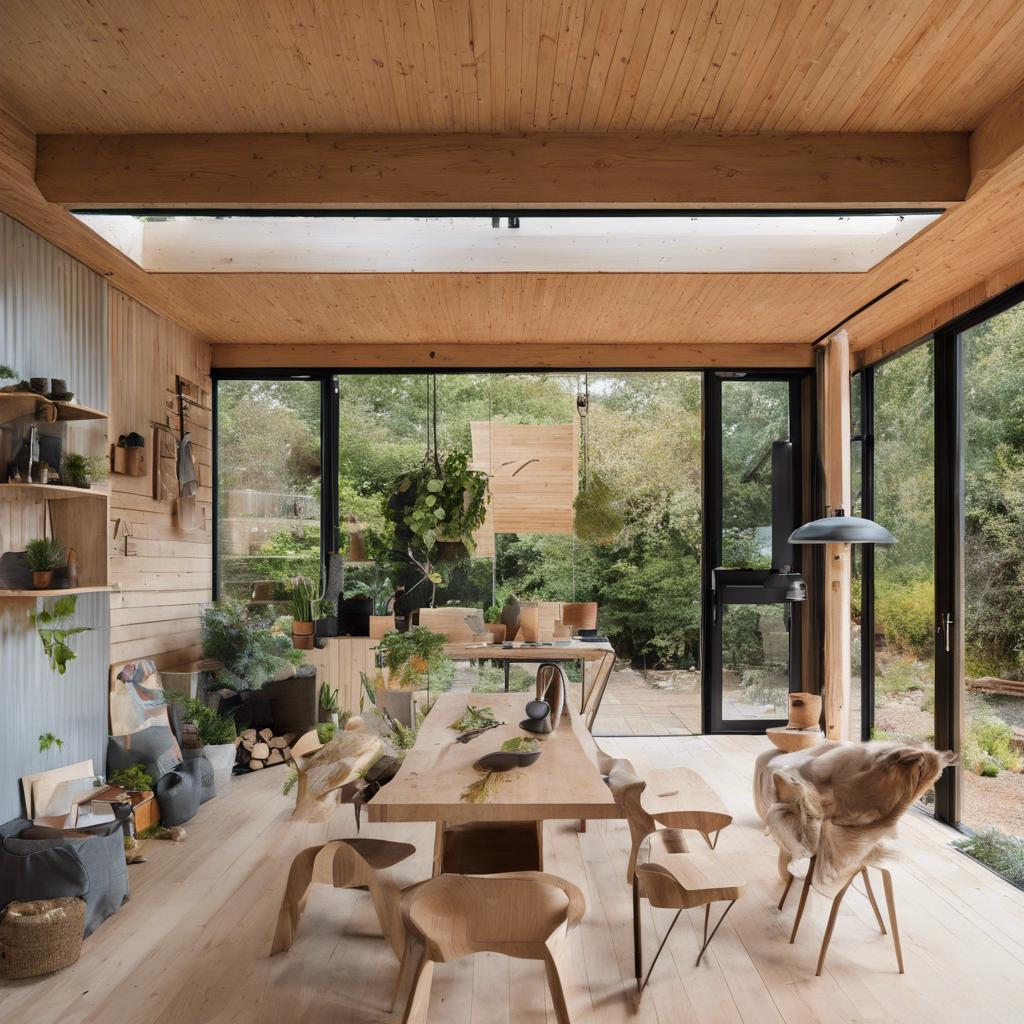
When it comes to sustainable construction, choosing low-impact foundation materials can make a significant difference in reducing the environmental footprint of a building. By opting for eco-friendly options, such as recycled materials, reclaimed wood, or natural stone, you can create a foundation that not only supports the structure but also aligns with your commitment to sustainability.
One innovative example of a contemporary shed built with sustainable materials is the Eco-Friendly Haven. This unique structure features a foundation made from recycled concrete and reclaimed wooden beams, providing both durability and eco-conscious design. The use of these materials not only reduces waste but also adds a rustic charm to the shed’s overall aesthetic.
In addition to the recycled concrete and reclaimed wood foundation, the Eco-Friendly Haven also incorporates natural stone pavers for the exterior flooring. These pavers are sourced locally, further reducing the carbon footprint associated with transportation. By choosing sustainable materials for the foundation and flooring, this contemporary shed demonstrates how low-impact choices can contribute to a more eco-friendly construction process.
Maximizing Ventilation and Airflow for Comfort

When it comes to maximizing ventilation and airflow in your living spaces, there are several key strategies to consider. One effective way to promote natural ventilation is by strategically placing windows and doors throughout the structure. This allows for cross-ventilation, ensuring fresh air circulates freely throughout the space. Additionally, incorporating a skylight or roof vent can help to release hot air and improve airflow, creating a more comfortable environment.
Another important element to consider when maximizing ventilation is the use of sustainable materials that promote air quality. Opting for eco-friendly materials such as bamboo flooring, recycled glass countertops, and low-VOC paint can help reduce indoor air pollutants, creating a healthier living environment. Additionally, choosing materials that are sourced locally can further reduce carbon emissions associated with transportation.
Creating a well-ventilated and eco-friendly living space not only enhances comfort but also promotes sustainability. By incorporating green building practices and utilizing sustainable materials, you can create a space that prioritizes both your well-being and the health of the planet. Consider consulting with a professional architect or designer to explore innovative solutions for maximizing ventilation and creating a contemporary shed that is both stylish and environmentally conscious.
Non-toxic Finishes and Sealants for a Healthy Shed Environment
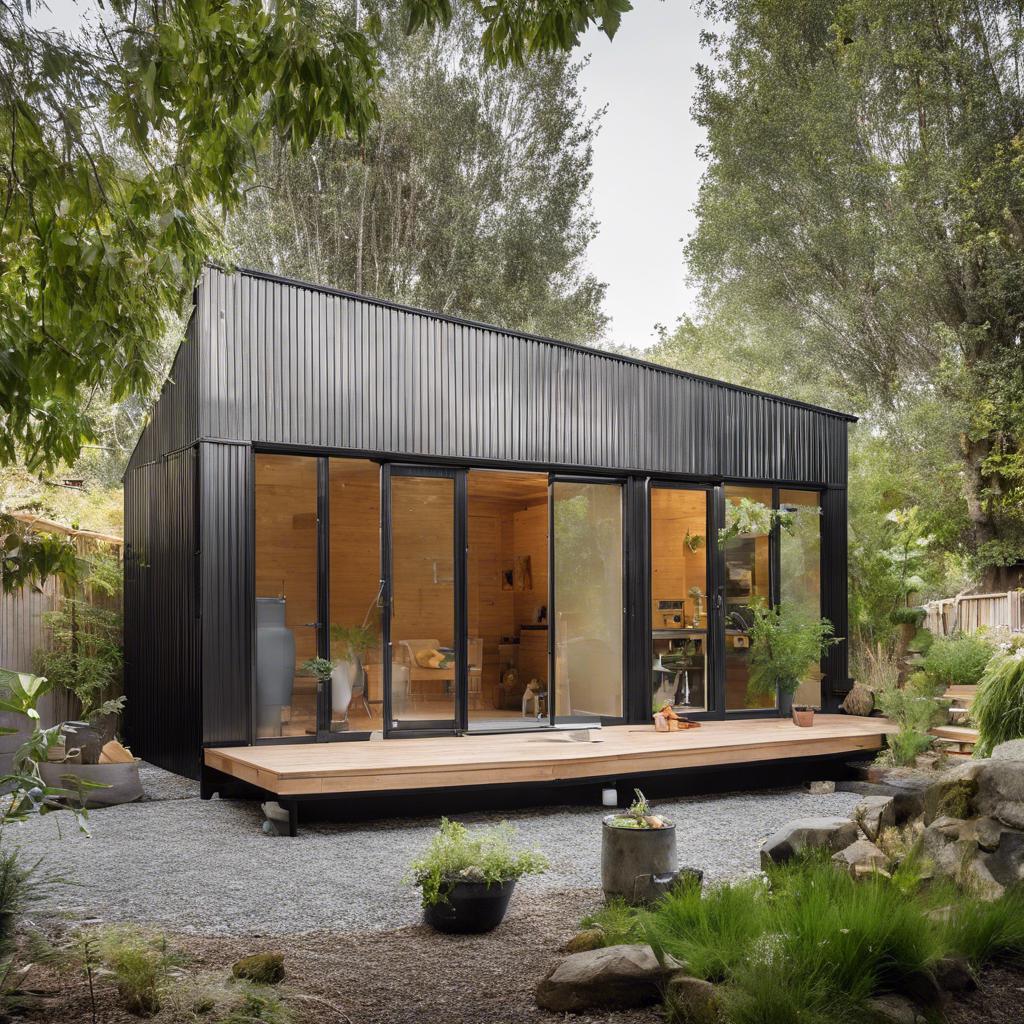
When constructing a contemporary shed using sustainable materials, it is important to prioritize . By choosing eco-friendly options, you not only promote a safer space for yourself but also contribute to a greener planet. There are a variety of non-toxic finishes and sealants available that will not compromise the aesthetics or durability of your shed.
One option for non-toxic finishes is linseed oil, which is made from natural flaxseed and contains no harmful chemicals. It provides a beautiful, warm finish that emphasizes the natural beauty of the wood. Beeswax is another eco-friendly choice that creates a protective barrier on the wood while giving it a subtle sheen. For sealants, water-based polyurethane is a great alternative to traditional solvent-based options. It is low in volatile organic compounds (VOCs) and provides a durable finish.
Creating an eco-friendly haven with sustainable materials and non-toxic finishes is not only beneficial for your health but also for the environment. Making conscious choices when it comes to building materials and finishes can go a long way in reducing your carbon footprint and promoting a greener lifestyle. By prioritizing non-toxic options, you can enjoy a healthier shed environment without compromising on style or durability.
Tips for Maintaining and Caring for Your Eco-Friendly Shed
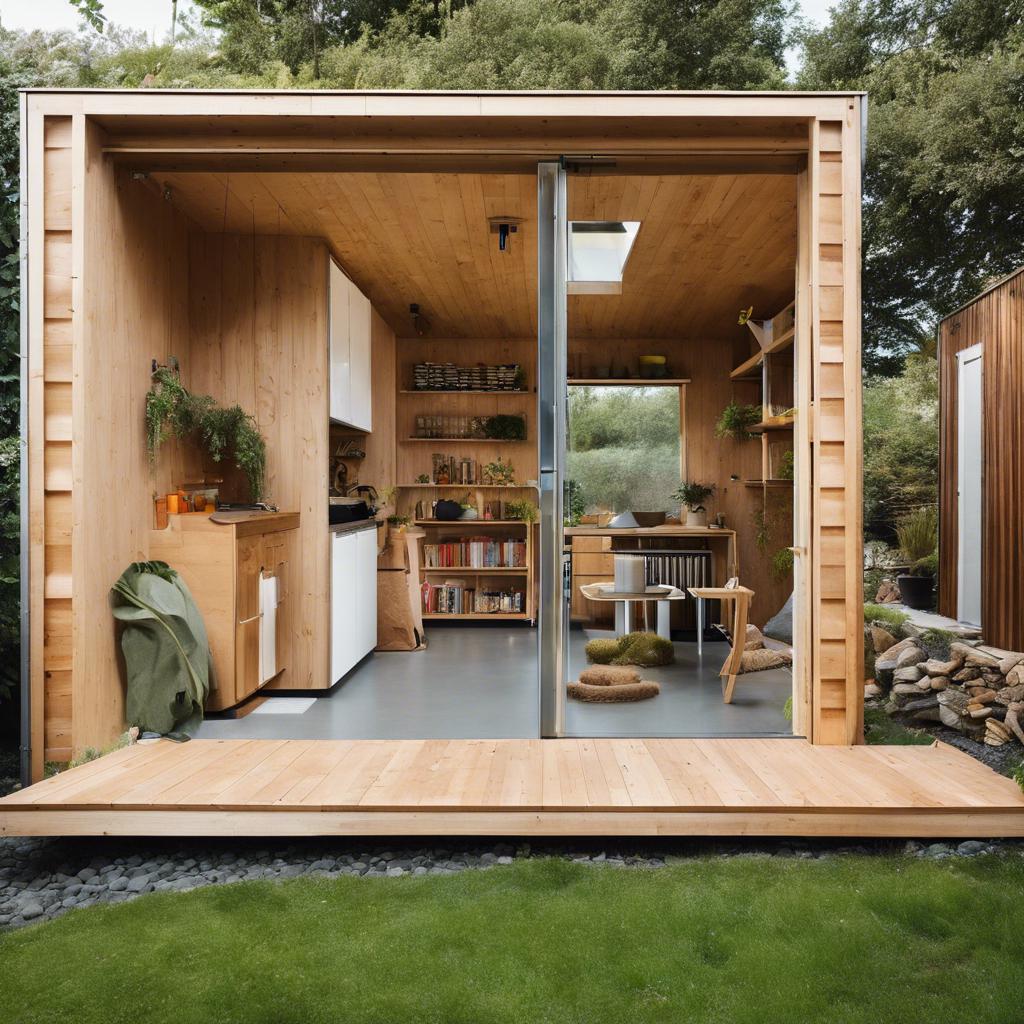
When it comes to maintaining and caring for your eco-friendly shed, there are several tips you can follow to ensure that it remains in top condition for years to come. One of the key aspects of preserving your sustainable structure is to regularly inspect it for any signs of wear and tear. This includes checking for leaks, cracks, and damage to any sustainable materials used in the construction.
Another important tip is to properly clean your eco-friendly shed on a regular basis. Use eco-friendly cleaning products to ensure that you are not compromising the sustainability of your structure. Clearing out any clutter and debris inside the shed can also help to prevent mold and mildew from forming, which can deteriorate the eco-friendly materials.
Additionally, consider adding a green roof to your eco-friendly shed to further enhance its sustainability. A green roof not only adds a beautiful touch to your shed but also helps to regulate temperature, reduce energy costs, and promote biodiversity. By following these tips and taking care of your eco-friendly shed, you can create a sustainable haven that will stand the test of time.
Q&A
Q: What are some of the sustainable materials used in building this contemporary shed?
A: The contemporary shed is built using reclaimed wood, recycled steel, and eco-friendly insulation materials, making it a truly sustainable structure.
Q: How does this eco-friendly shed contribute to environmental conservation?
A: By using sustainable materials and energy-efficient design principles, the shed minimizes its carbon footprint and helps reduce the strain on the environment.
Q: What are some of the unique features of this eco-friendly haven?
A: The shed features a living roof covered with native plants, solar panels for energy production, and a rainwater harvesting system for irrigation and gray water usage.
Q: How does the design of this contemporary shed enhance its eco-friendly credentials?
A: The shed’s design incorporates passive solar heating, natural ventilation, and optimal use of daylight, reducing the need for artificial heating and cooling and making it a truly sustainable space.
Q: How can homeowners incorporate similar eco-friendly practices into their own projects?
A: Homeowners can use sustainable materials, design for energy efficiency, and incorporate renewable energy systems to create their own eco-friendly havens that contribute to a more sustainable future.
